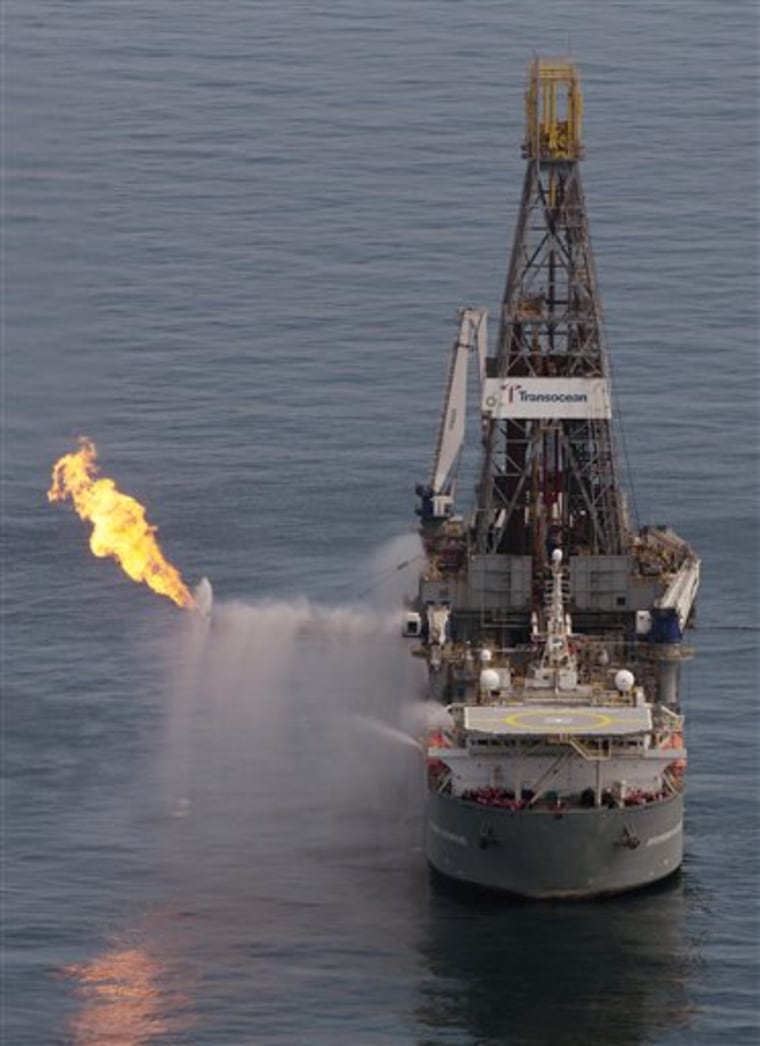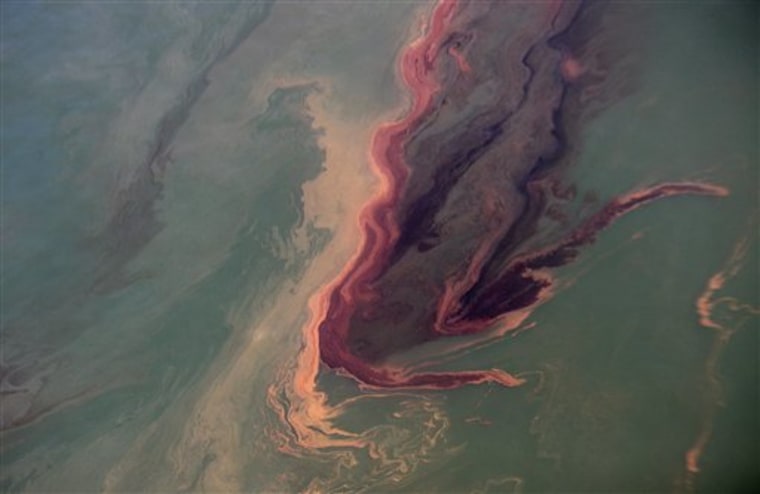In the chaotic days after the oil rig explosion, BP engineers and federal regulators desperate to plug the blown-out well scrambled to complete plans for a pair of deepwater relief wells that represent the best chance to end the disastrous spill in the Gulf of Mexico.
But BP didn't begin drilling the relief well until 12 days after the start of the disaster as the company and government rushed through environmental reviews, permits and other plans. The government does not require oil companies to have relief well plans in place ahead of time, and the lack of planning cost the company valuable time to get the spill under control.
And the plan ultimately approved by the government offers virtually no details outlining the relief well effort or what dangers might lurk in the depths as the company drills 18,000 feet below the surface — the equivalent of 16 Eiffel Towers. Experts say the relief effort could be exposed to the same risks that caused the original well to blow out in catastrophic fashion, while potentially creating a worse spill if engineers were to accidentally damage the existing well or tear a hole in the undersea oil reservoir.
The gaps in the relief well process mirror other regulatory issues and oversights that have been exposed since the Deepwater Horizon rig exploded on April 20, killed 11 workers and sent tens of millions of gallons of oil gushing into the Gulf. The Associated Press earlier found that BP's voluminous spill plans for the Gulf and rig were riddled with omissions and glaring errors, leading to criticism that the company has essentially been making things up as it goes. Among the omissions were a lack of a clear plan for a relief well.
BP says the relief well has been a success and ahead of schedule, representing a welcome change for engineers who have been attempting one risky, untested maneuver after another. Relief wells are a more proven method in the industry, and engineers are comfortable and confident in the process.
Engineers plan to dig the well 18,000 feet below the surface and then drill sideways into the blown-out well and plug it with cement. Kent Wells, BP's senior vice president of exploration and production, said this week that more details would be released when the process nears completion in early August.
Relief well plans
U.S. regulations are more lax than other countries when it comes to relief wells. In Canada, for example, energy companies must have plans and permits for relief wells before drilling is approved. These plans must describe exactly how engineers would drill a relief well if required to do so — down to identifying the drilling vessel and spelling out how long it would take.
Coast Guard Adm. Thad Allen, the government's point-man in the response, has taken it a step further, suggesting that it might be worth requiring oil companies to drill relief wells in tandem with the main well. He said the idea "would be a legitimate point to be raised" and put in front of a commission investigating drilling regulations.
That would be a considerable expense to oil companies — relief wells can cost $100 million.
In the Gulf disaster, BP officials put together relief well plans on the fly in the days after the explosion. BP submitted a relief well plan six days after the blowout. It began drilling the well on May 2 — 12 days after the explosion. The British oil giant also started drilling a second relief well on May 16 under pressure from the White House.
To get permits for the relief wells, the company used similar wording from earlier papers and submitted them to the federal Minerals Management Service. The plans lacked specifics about how it planned to drill the wells or how long it would take.
But the company underscored the danger of such hasty planning when it noted that a mishap could lead to another blowout that could leak more oil into the ocean. The permits also discuss a worst-case scenario that would involve inadvertently puncturing the reservoir.
BP did not respond to repeated requests by The Associated Press for more information about their strategy and approach in drilling the wells.
"The plan on file mirrors what they were likely asked to do by MMS to get the approval — it's a pretty voluminous document that doesn't have a lot of meat on it," said Eric Smith, associate director of the Entergy-Tulane Energy Institute. "It's a bunch of people pushed for time, but then they've got pages of material about possible Co2 emissions, animals and archaeology. There's really no details about the relief wells."
Some oil company executives told the AP that submitting a "template procedure" with scant details is often necessary because the plans can change often depending on the type of relief well needed.
'Regulations and requirements'
U.S. Department of Interior spokeswoman Kendra Barkoff said the MMS "approved the relief wells in accordance with our regulations and requirements." She added that the agency has applied rigorous inspections and oversight of the entire relief well process, including having an inspector and engineer on site when BP conducted tests on the blowout preventers in the two wells.
"We applied additional testing and safety requirements to the drilling of the relief wells because the situation demanded both urgency but also precision and the highest level of oversight and safety. We weren't willing to let BP move forward with the relief wells without raising the bar for safety on those wells," she said.

Ira Leifer, a University of California, Santa Barbara researcher who is on the government team measuring the amount of oil spewing from the well, has raised questions about the safety of BP's efforts to stop and contain the leak, including the relief well.
He said the many unknowns about the flow rate and pressure and quantity of oil coming from the well make it difficult to "design and engineer safe oil recovery systems, such as the 'cap,' nor design and engineer ultimate solutions safely such as the relief wells."
The company and outside experts alike say the tried-and-true method will eventually work, but it's no simple task. Engineers must drill more than three miles beneath the surface and hit a target only a few inches across before pumping in drilling fluids to plug the breached well.
As with any deepsea drilling effort, there are risks — including the potential for a blowout in the relief wells just like what happened in April. BP said in a filing that if a relief well were to blow out, each could spew 250,000 gallons more crude into the Gulf's waters each day — and force engineers to try to plug a new, separate leak.
Case in Mexico
The relief wells drilled into the blown-out Ixtoc well in Mexico three decades ago took about three months to quell the gusher. Engineers in the current spill are confident they can pull it off by August, although some are skeptical.
"The petroleum engineers seem pretty cocky about that," Ed Overton, a Louisiana State University professor of environmental studies. "It just strikes me that there are so many unknowns. My guess is that it's going to take more than one try."
The digging is a trial-and-error process. As the drill plunges deeper through the Earth's crust, crews will probe the area with a high-tech metal detector to guide their way to the shaft. If they punch it too far, engineers will have to reverse and then plug the hole with cement. Experts say each miss could take days or longer to fix.
"In order to do this perfectly you'd have to know exactly where the original well is," said David Rensink, incoming president of the American Association of Petroleum Geologists. "And unfortunately the directional data that goes into this is not perfect."
Associated Press Writer Ray Henry contributed to this report.
